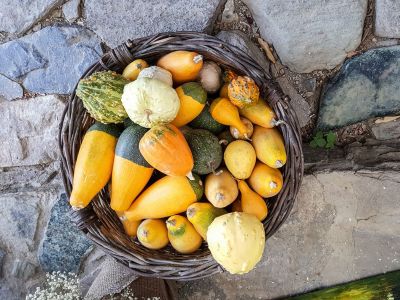Can You Eat Gourds?
Gourd edibility is negotiable, but history indicates that some were eaten, at least in part. First, we have to determine what is a gourd before going into ways to eat gourds. You can probably find a gourd shaped like anything you can imagine. Whether warty, smooth, or bearing strange protuberances, gourds exceed the imagination and give wings to creativity. Are gourds edible though? That is a subject for debate, considering the interior flesh is minimal and hardly worth the effort. If you are really desperate, you might consider eating decorative gourds. After all, they are usually sold in the produce section. Many native tribes used the seeds, but there is no record of wild gourd flesh being eaten. This is probably due to the unpalatability, which is said to be bitter and tart. Additionally, most gourds are small, and there is relatively little flesh to make the effort of cracking one open sensible. Decorative gourds are dried, and the pith is shriveled and hard. For these reasons, eating decorative gourds is probably inadvisable.
Gourd Edibility – Are There Ways to Eat Gourds?
The flesh won’t kill you and probably has some nutrient benefits just like squash. If you wish to attempt the dish, select young fruit that hasn’t fully ripened and is not dry. You can prepare it just like you would pumpkin, by paring away the rind and removing the seeds. Bake or steam it and season the heck out of it to cover up any bitter flavor. You can also cut up the flesh and boil it for 15 to 20 minutes or until tender. For seasoning, think bold flavors like those used in Asian or Indian cuisine which will help disguise any harsh notes. The most commonly eaten gourds are Asian. Again, they are picked young and under ripe to ensure less harsh flavor. Among these are sponge (or Luffa) and bottle (or Calabash). There is also an Italian gourd called cucuzza. The Turk’s Turban is actually quite delicious with a delicate, sweet flavor and soft flesh when cooked. However, for overall taste and ease of preparation, standard squash varieties are better used in cooking. Leave the ornamental varieties for décor, bird houses, or as sponges.
